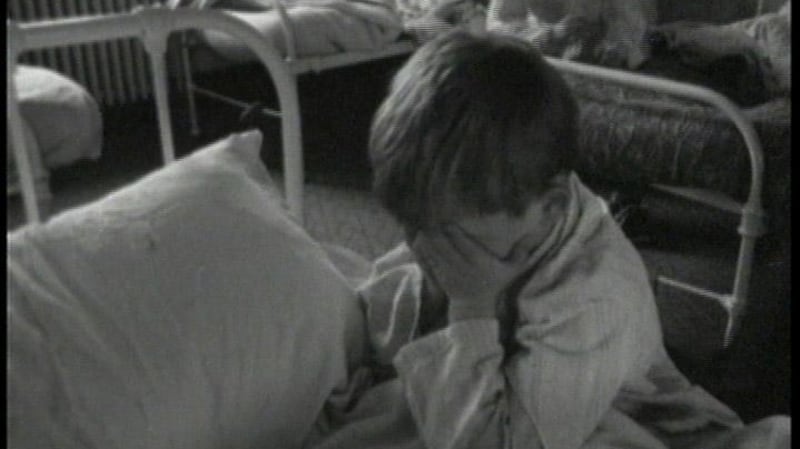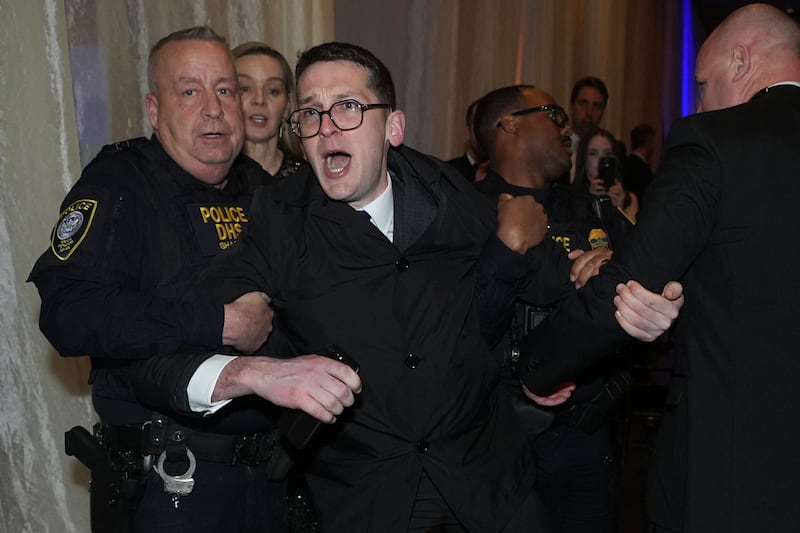In many ways it was all about incarceration. In its many forms it infused the journalism of Mary Raftery. While it didn't make for appealing reading these were stories that needed to be told – and they needed someone with an unflagging social conscience to tell them.
Raftery joined In Dublin just as the campaign for the eighth amendment was gaining momentum and politicians of all persuasions were courting the votes promised by its advocates. And while crisis pregnancy today can hardly be described as incarceration, in the early 1980s the lack of options left many women trapped. And so, on the eve of polling day for the 1983 amendment, In Dublin published a special “Vote No” edition that carried articles by female writers and politicians. Raftery’s own contribution focused on the intimidation endured by public figures such as Nuala Fennell, Monica Barnes, and Catherine McGuinness – all of whom had advocated a “no” vote.
Later that year, having joined Magill, she wrote a detailed exposé on the Dunne family – the criminal fraternity widely blamed for introducing heroin into Ireland. Again, incarceration was conspicuous by its presence: the key member of the family – Larry Dunne – and some of his siblings had spent time at an industrial school in Offaly.
Joining RTÉ’s current affairs unit Raftery was named Woman Journalist of the Year in 1985 for her documentary on the mistreatment of patients in Irish psychiatric hospitals.
Journalism also seemed trapped. Reflecting on the corruption that was endemic in certain political circles in the 1980s Raftery noted that business operated behind an “effective and fully functioning cloak of secrecy [with] virtually all the doors closed against anybody getting even the basic information concerning commercial activities”.
And, when she finally got proof of questionable behaviour she was prohibited from using it. In 1989, while investigating the collapse of developer Patrick Gallagher’s property empire for RTÉ’s Today Tonight, Raftery came into possession of the liquidator’s report into one of Gallagher’s companies, Merchant Banking. It listed a loan of £15,000 to one Charles J Haughey who was now taoiseach.
The programme, which had ben due to be aired in November 1989, was delayed by RTÉ management as the director of public prosecutions considered charges against Gallagher. When it finally aired in February 1990 the programme made no mention of the financial relationship between Gallagher’s company and Haughey on the grounds that to do so was “potentially libellous”. Indeed, when Raftery asked him to comment on the matter Haughey warned that if the matter was raised in the programme he would sue for defamation.

But it is for the ground-breaking three-part documentary series States of Fear that Raftery will be most remembered. Aired by RTÉ in April and May 1999 the series laid bare the neglect, physical and sexual abuse perpetrated in religious-run industrial schools around the country. The in-depth research and powerful testimony of the victims ensured that the programmes received substantial media coverage.
Writing in this newspaper, Kathy Sheridan noted that the series “unravelled fact from myth” by using the government’s own files to show that the State “knew a great deal about the systemic physical and emotional abuse within the system, but chose to ignore it”. On May 11th, 1999, as the last of the three programmes was about to be aired, then taoiseach Bertie Ahern apologised on behalf of the State to those who had been abused in the institutions and announced the establishment of a commission of inquiry into the industrial school system.
The series also prompted Brian Quinn, former journalist and editor of the Evening Herald between 1969 and 1976, to write an eloquent letter to The Irish Times in which he noted the failure of his generation of journalists to expose the abuse. He admitted that journalists of the 1940s and 1950s “had their suspicions of the industrial schools”.
Having viewed States of Fear, Quinn now believed that journalists “should have tried harder to find out the real truth” but felt that, even if they had, they “would not have been believed and managements and editors would never have held out against a massed attack by the all-powerful Irish Catholic Church”.
The journalists of mid-20th-century Ireland were, he concluded, “trapped in a carefully designed plot that mixed lies with official evasion and ecclesiastical terror”.
The following year, Raftery was back with Cardinal Secrets. Again aired by RTÉ it catalogued the abuse perpetrated by eight priests in the Dublin Catholic archdiocese and the failure of successive archbishops to report the abuse to the Garda Síochána. The response to the programme was deafening and the government established another commission of inquiry.
The reports of both commissions of inquiry that were prompted by Raftery’s journalism – rhe Ryan Report (May 2009) and the Murphy Report (November 2009) – made for horrific reading and altered forever the nature of the relationship between church and State and between the Catholic Church and the Irish people.
A longtime columnist with The Irish Times, Mary Raftery died in 2012 and her final television work, Behind the Walls, examined the history of Ireland's psychiatric hospitals. But her work continues to inspire future generations of journalists.
This week, to mark the 20th anniversary of States of Fear, DCU will launch a major exhibition on Raftery’s journalism and on how it compelled us to engage in a full and frank reassessment of our history as a State. DCU will also launch, in collaboration with the Raftery family and the BAI, a new journalism industry award, the Mary Raftery Prize which will be awarded annually to an individual or small team responsible for journalistic work produced on the island of Ireland which, in the view of the judges, combined the rigorous analysis and commitment to social justice which characterised Raftery’s journalism.
Fearless: The Journalism of Mary Raftery runs in the O’Reilly Library, DCU’s Glasnevin, Dublin 11, from Thursday, April 25th, until late autumn.
Mark O’Brien is chair of DCU’s Media History Collection and author of The Fourth Estate: Journalism in Twentieth-Century Ireland


















